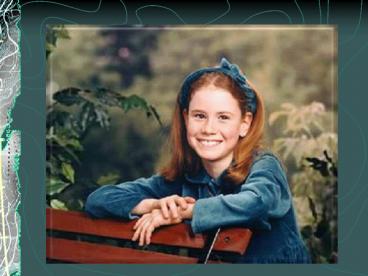Nervous System - PowerPoint PPT Presentation
1 / 45
Title:
Nervous System
Description:
Spinal Nerves emerge through intervertebral foramina ... Ischiatic (Sciatic) Nerve. Terminology. Groups of Cell Bodies. CNS Nuclei. PNS Ganglia ... – PowerPoint PPT presentation
Number of Views:25
Avg rating:3.0/5.0
Title: Nervous System
1
(No Transcript)
2
Nervous System
- There are two divisions.
- CNS and PNS
3
Central Nervous System (CNS)
- Brain
- Spinal Cord
4
Peripheral Nervous System (PNS)
- Cranial Nerves emerge through cranial foramina
of the skull - Spinal Nerves emerge through intervertebral
foramina - Ganglia groups of nerve cell bodies outside of
the brain and spinal chord - Autonomic Nervous System innervates smooth
muscle, cardiac muscle, and glands
5
Nucleus Cell body Dendrite Axon Schwann
cell Synaptic knobs Node of Ranvier
6
Classification of Nerve Cells (Neurons)
- By of Processes
- A. Unipolar one process
- B. Bipolar one dendrite and one axon
- C. Multipolar branching to create more
- than one of each
7
99 are Multipolar
8
By Function
- A. Sensory (afferent)
- B. Motor (efferent)
- C. Interneurons interposed between sensory and
motor neurons
9
(No Transcript)
10
Myelinization
- Myelin Sheath The specialized glial cells that
wrap around the axon of neurons. - Within the CNS ? Oligodendrocytes
- Within the PNS ? Schwann Cells
11
(No Transcript)
12
Unmyelinated Axons
13
- Nodes of Ranvier
- Gaps in
- myelin sheath
- on the axon.
14
1m/s vs 120m/s Saltatory conduction refreshed
at Nof R
15
Ischiatic (Sciatic) Nerve
16
Terminology
- Groups of Cell Bodies
- CNS Nuclei
- PNS Ganglia
- Groups of Nerve Processes
- CNS Tracts
- PNS - Nerves
17
(No Transcript)
18
(No Transcript)
19
Ganglia
20
Review Parts of the PNS
- Cranial Nerves
- Spinal Nerves
- Ganglia (what do you call the CNS counterpart ?)
- Autonomic Nervous System
21
Sympathetic Nervous Fight/Flight
- Increased Heart Rate
- Increased Blood Pressure
- Pupil Dilation
- Decreased Urination
- Increased Sweating
- Bronchial Dilation
- Decreased Salivation
22
(No Transcript)
23
Parasympathetic Energy Sparing
- Decreased Heart Rate
- Decreased Blood Pressure
- Pupil Constriction
- Increased Urination
- Decreased Sweating
- Bronchial Constriction
- Increased Salivation
24
(No Transcript)
25
Neurotransmitters -
- Chemicals released by the pre-synaptic neuron.
26
- Sympathetic
- Epinephrine,Norepinephrine
- Parasympathetic
- Acetylcholine
27
Whats the Matter?
- Grey Matter
- non-myelinated neurons
- White Matter
- Myelinated neurons
28
- Brain
- Grey matter covers white matter
- Spinal Cord
- White matter covers grey matter
29
PNS Glial Cells
- Cells that support and protect the nervous system
30
- Schwann Cells form the myelin sheath for axons
- Hold neurons in place
- Keep messages from getting scrambled
- Increase Speed of Transmition
- Can reconnect a cut axon only in PNS, not CNS
31
CNS Glial Cells
- Oligodendrocytes wrap around axons to form the
myelin sheath
32
(No Transcript)
33
- Astrocytes mediate metabolic exchange
34
(No Transcript)
35
- Microcytes
- take up extracellular K
- macrophages
36
(No Transcript)
37
Brain
- Cerebrum made of white and grey matter
- Largest part of mammalian brain
- Higher order behavior (awareness, learning)
38
(No Transcript)
39
- Cerebellum motor function and coordination
- Brain Stem
- Medulla Oblongata, Pons, Mid-brain
- Autonomic Functions things you dont think about
40
Ventricles and Cerebrospinal Fluid
- Ventricles Open spaces in the brain, filled
with fluid, that support and cushion the brain.
41
- Cerebrospinal Fluid slippery, clear fluid that
bathes and cushions the CNS. - Produced by Choroid Plexuses
- Reproduced every 24 hours
42
Meninges
- Dura Mater
- Arachnoid Membrane
- Pia Mater -
43
Reflexes
- Spinal Reflex- rapid, automatic response to
sensory input - Does not require brain
- Reflex Arc- sensory receptor-gtsensory neuron
-gtCNS-gtinterneuron-gtmotor neuron-gttarget organ
44
Divisions of Motor Systems
- UMN-neurons in CNS that activate motor neurons
(lesionsgtgtgtspastic paralysis, hyperactive
stretch) - LMN-neurons in cranial spinal nerves that
directly innervate muscles (lesionsgtgtgtflaccid
paralysis, muscular atrophy)
45
Conscious Proprioception
- Sense of body position and movement without sight
- How?
- Stretch receptors in skeletal muscle, tendons,
ligaments, joint capsules































